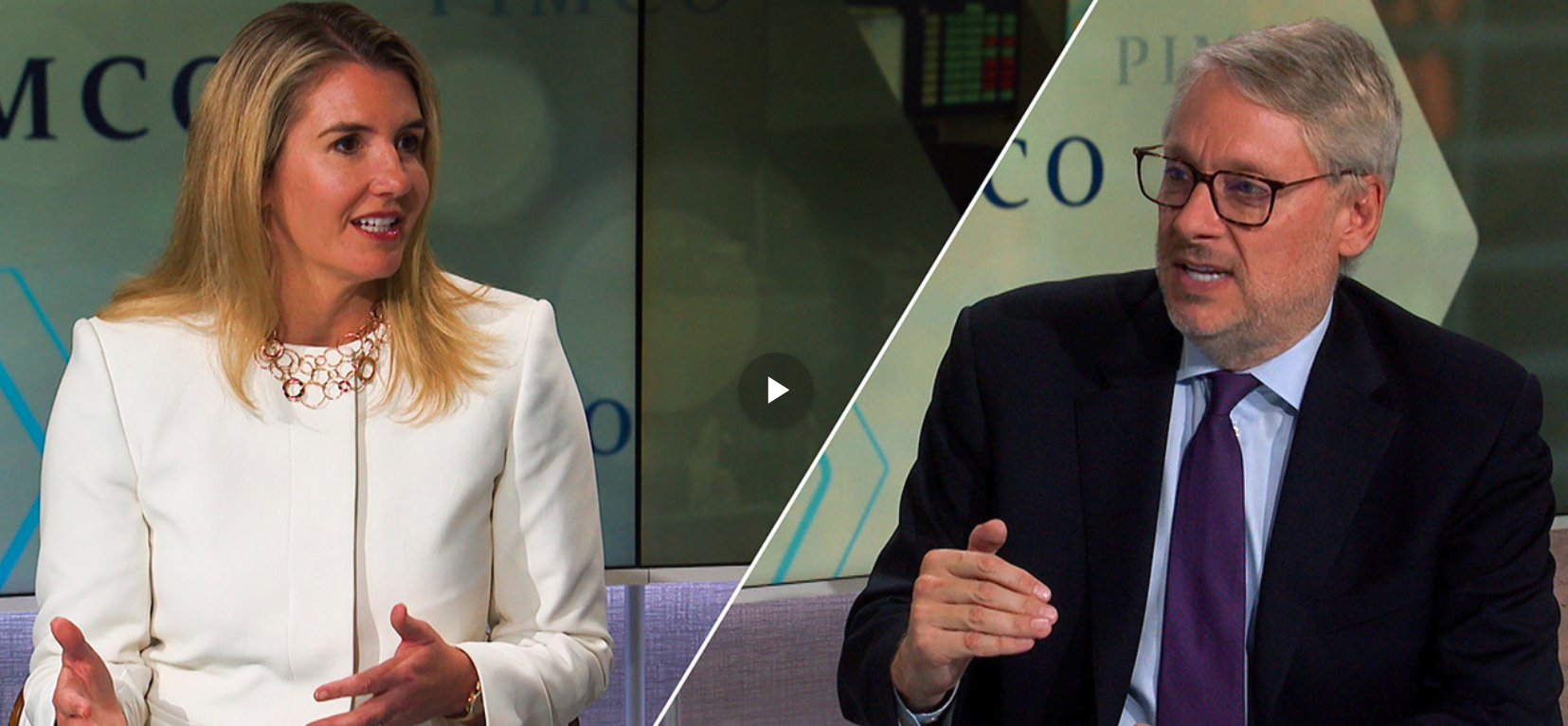The week that was …
Economic round-up
UK GDP
The UK economy was flat in July, with GDP showing no growth, following a 0.4% rebound in June. This was in line with market expectations. Services performed marginally better than goods, rising 0.4% over the quarter. Read more from FX Street here
US inflation
US inflation rose slightly in August as companies passed on the cost of tariffs to consumers. The US Consumer Price Index (CPI) showed prices rising at 2.9% over the last year, in line with expectations, but the highest since January. Core CPI, which excludes energy and food costs, stayed stable at 3.1%. Read more from the Guardian here
US trade
US producer prices unexpectedly fell in August, with a drop in margins and mild increase in the cost of goods, suggesting domestic firms may be absorbing some of the tariffs on imports. The data may also signal weaker domestic demand. Read more from Reuters here
ECB rate decision
As the market had expected, the European Central Bank (ECB) held rates at 2% last week. Economic uncertainty persists around the US’s aggressive tariff agenda, the bank said, with the situation for some sectors, such as wine and spirits, not yet clear. Read more from CNBC here
China trade
August saw China’s exports climb 4.4% year-on-year in US dollar terms, disappointing expectations and marking their lowest growth since February. In particular, China’s exports to the US plunged 33% in August, while imports dropped 16%. Read more from CNBC here
China inflation
The Chinese economy slipped into deflation in August. China’s CPI contracted 0.4% year-on-year last month – a sharper fall than most analysts had expected as the index had been flat in July. China’s producer prices index meanwhile fell 2.9% year on year. Read more from the FT here
Markets round-up
Nasdaq hits new highs
The Nasdaq powered to a brief new high on Friday, with Microsoft particularly strong. Market optimism appears to have been fuelled by anticipation of an interest rate cut at the Federal Reserve’s policy meeting this week. Read more from Reuters here
Asian markets surge
Stocks in Japan, South Korea and Taiwan ended the week at record highs, with Asia’s chipmakers particularly strong. The surge in the three markets has driven the MSCI Asia-Pacific benchmark near an all-time high and has pushed it ahead of the MSCI World. Read more from the FT here
US IPOs return
The US IPO market has roared back into life with the busiest week for Wall Street listings since a boom four years ago. Klarna, Gemini and Legence were among seven large-cap companies that went public in the US this week, raising more than $4bn between them. Read more from the FT here
Sterling weaker
The British pound dropped against the US dollar on Friday after the latest set of GDP data was published. It was, however, still stronger for the week overall. Traders warned that changes in gilt yields could exert pressure on the currency. Read more from Reuters here
France downgraded
Credit rating agency Fitch has downgraded France’s sovereign credit score, following the government’s recent failure to pass its national budget. The eurozone’s second-largest economy has been stripped of its AA rating as a result of its political crises and ballooning debt and is now rated A+. Read more from Reuters here
UK’s spare cash
UK savers have more than £614bn of spare cash that could potentially earn higher returns from investments, according to a new report from Barclays. The bank found money that could be in “possible investments” has grown by a third since 2022, up from £460bn, with around 15 million adults holding excess cash. Read more from the FT here
“There is a lot of talk of ‘doom loops’ and a tough Budget but the data we are seeing on the UK does not tell that story.
Selected equity and bond markets: 05/09/25 to 12/09/25
| Markets | 05/09/25 (Close) |
12/09/25 (Close) |
Gain/loss |
|---|---|---|---|
| FTSE All-Share | 4981 | 5018 | +0.7% |
| S&P500 | 6481 | 6584 | +1.6% |
| MSCI World | 4191 | 4253 | +1.5% |
| CNBC Magnificent Seven | 383 | 396 | +3.4% |
| US 10-year treasury (yield) | 4.08% | 4.07% | |
| UK 10-year gilt (yield) | 4.6% | 4.7% |
Investment round-up
Disclosure regime ‘not working’ – FCA
Feedback to a consultation on the FCA’s Consumer Composite Investment regime shows the current system of disclosures for consumers around investment products “is not working”, according to the regulator. Disclosures needed to be “functional rather than factual”, it added.
Investor confidence slides
Confidence in global markets continued to slide in early September with the sharpest fall in North America (14%), according to Hargreaves Lansdown’s latest Investor Confidence Index. Almost all other sectors also saw declines. In Europe, sentiment fell by 10%.
Square Mile rebrands to Titan
Following its acquisition by Titan Wealth in February 2024, Square Mile has rebranded to Titan Square Mile and launched a model portfolio service. The firm has provided co-manufactured tailored MPS solutions to advisers for more than a decade but said its latest launch “broadens its expertise” to a wider adviser market.
Wren Sterling launches multi-asset funds
Wren Sterling’s discretionary fund management business, Magnus, has launched three multi-asset funds, aimed at clients of the group’s financial planners. They are the IFSL Magnus Max 35% Equity fund, the IFSL Magnus Max 60% Equity fund and the IFSL Magnus Max 85% Equity fund, managed by the firm’s CIO Rory McPherson.
Verve offers compliance switching
Financial planner support service provider Verve has launched a compliance switching service designed to make changing providers easier. The new service will handle all aspects of a switch, including moving data, resetting policies, and updating the audit.
LISA reform call
The government has “not heeded warnings” the Lifetime ISA (LISA) needs reform, according to a Treasury Committee. It said it was unconvinced the LISA was helpful to those in genuine need of financial support, with 47% of LISA wealth held by those in the top household-income quintile.
… and the week that will be
US Fed meeting
Investors, economists and policymakers will be focused on this week’s meeting of the Federal Reserve, as they try to predict how the central bankers will react to a weakening labour market and stubborn unemployment. Traders are pricing in a 93% chance the Fed will cut the rate by a quarter of a point, to 4%-4.25%, according to the CME Group’s FedWatch tool. Read more from Investopedia here
UK diplomacy
Prime minister Keir Starmer has a busy week of diplomacy ahead. With the US president in town, the hope is that UK-US deals can be announced on nuclear reactors, artificial intelligence data-centres and whisky. Starmer also faces further scrutiny of the government’s contentious employment rights bill, which is backed by unions but mistrusted by businesses. Read more from the FT here
The week in numbers
UK rate decision: After August’s 25-basis-points cut in UK interest rates, the market is expecting the Bank of England to hold them at 4% at this week’s meeting.
UK inflation: Consensus expectations are for UK prices to rise 3.8% year-on-year in August – in line with last month – and 0.3% month-on-month, up from 0.1%. Core CPI is forecast to be 3.7% year-on-year, down from 3.8%.
US rate decision: The Federal Reserve is widely expected to cut US interest rates by 25 basis points this week – down to a range of 4%-4.25% from the current 4.25%-4.5%.
Japan rate decision: Consensus expectations are for no change in Japan’s interest rates from the current level of 0.5%, although the Bank of Japan’s accompanying statement may influence markets.
China data: Consensus forecasts have retail sales in China rising 5%, from 3.7% last month. Industrial production is meanwhile forecast to rise 5.1%, from 5.7% last month.
UK retail sales: August retail sales in the UK are forecast to rise to 1.5% year-on-year, from 1.1% last month, and 0.5% month-on-month, from 0.6%.
UK employment: The UK’s July unemployment rate is forecast to remain at 4.7%, with average hourly earnings (including bonus) rising to 4.5%, a slowdown from 4.6% last month.
US retail sales: Retail sales for the US in August are forecast to rise 0.4% month-on-month from 0.5%.
In focus: Comforts of home
This month’s UK GDP data was every bit as unexciting as had been expected and so the country’s economy continues to move forward at a snail’s pace. At the same time, there are worries over the UK’s debt, its political stability and its capital markets. And yet investors seem curiously unbothered, with the FTSE 100 outpacing the S&P 500 since the start of the year and continuing to show some genuine momentum.
So far over 2025, the UK market has finally managed to reverse the run of weakness that has persisted since Brexit. According to Marketwatch data, for the year to 11 September, the FTSE 100 is up 13.4%. That is 2.3 percentage points ahead of the S&P500 over the same period.
“This makes 2025 the fifth strongest year for UK equities since 1995 – a striking outcome, given persistent concerns around sticky inflation, rising government bond yields and sluggish growth,” observes Alexandra Jackson, fund manager on the UK Opportunities Fund at Rathbones. “While investors remain cautious about government debt and inflation, strong company earnings and resilient demand have underpinned returns.”
Still, returns in the UK market have been relatively narrow and, while the FTSE 100 may have soared, it has been a tougher time in the small and midcap sectors. The FTSE Small Cap index is up just 3.8% over the year to date and momentum has stalled since the end of July. For its part, the FTSE 250 is up 4.9% for the year to date, and has also lost momentum in recent weeks.
Such polarisation is not just limited to market capitalisation – it can also be found across sectors. In general, companies that have large and valuable data-sets and look like they may benefit from the growth of AI – for example, Experian, London Stock Exchange Group and Relx – have done well. At the same time, those companies plugged into increasing defence spending across Europe – most obviously, BAE Systems and Rolls-Royce – have leapt higher. This has flattered the overall performance of the market.
Bull-market rallies often start with largecap equities before fanning out into small and midcap sectors – and this holds particularly true for the UK market, which lacks a significant domestic investor base and is therefore reliant on more fickle international buyers. The alternative scenario is that confidence trickles away again once these two trends have played out.
As inflation eases, we would anticipate a more vibrant consumer, given how strong personal balance sheets are, and a resumption of growth from the manufacturing/construction sectors.”
Not surprisingly, UK fund managers are hoping it is the former. Merchants Trust, for example, has historically been a predominantly largecap fund, but the team has been finding more and more opportunities among the UK midcaps. Manager Simon Gergel is struck by the relative dividend yields of the large versus midcap areas: the FTSE 250 (excluding Investment Trusts) has a yield of 3.5% – compared with the FTSE 100’s 3.3% – while the FTSE Small Cap yield is higher still, at 3.9%.
“It has been a really active period for the trust,” he says. “There are so many things we find attractive – mainly because of this market polarisation. We have a lot in the midcaps, which have been sold off.” This includes companies such as luxury goods group Burberry, outsourcing group Serco and value retail chain B&M.
“The FTSE 250 yielding more than the FTSE 100 is very rare and shows how cheap these companies are,” adds Gergl. This inevitably gives the portfolio a more domestic skew – although the trust still has more than 50% in international earnings.
The team does not believe the prevailing narrative on the UK economy, with Gergel pointing out the UK is forecast to deliver 1.2% economic growth in 2025 and has already delivered 1%. “Fiscal problems are being experienced by many developed countries and the UK is not an outlier,” he says. “There is a lot of talk of ‘doom loops’ and a tough Budget but the data we are seeing on the UK does not tell that story.”
JO Hambro UK Equity Income fund manager James Lowen also believes domestic names may be due a revival after a period when performance has been skewed by worries over the government’s finances. “Many of our domestically-oriented stocks have performed poorly in the last couple of months, as concerns about the UK government’s fiscal deficit have re-emerged,” he says. “While we are not complacent about these concerns, they do appear manageable, with the current deficit running no higher than expected.
“As inflation eases, we would anticipate a more vibrant consumer, given how strong personal balance sheets are, and a resumption of growth from the manufacturing/construction sectors. Many stocks in these sectors are on very modest ‘normalised earnings’ multiples and we see substantial upside to both earnings and multiples.”
There are no policies in place that favour a UK bias. If anything, there are disincentives. This means holders of UK equities are flightier.”
Lowen goes on to note economically-sensitive areas, such as industrials and consumer cyclicals, have performed poorly over the last three months – partly because they have been reporting more sluggish trading. He maintains, though, some of this can be blamed on the “confidence hiatus” created by Trump’s policies, adding: “Many of these stocks would be prime beneficiaries of the beginning of a rate-cutting cycle in the US and the continuation of one in the UK.”
Back at Merchants, Gergel is also optimistic about the UK consumer having plenty of firepower, with savings rates high and wage growth still expanding. There just needs to be some revival in confidence to support domestic spending, he argues.
None of which is to suggest the problems of the UK market have disappeared, of course – the most pressing being a lack of natural buyers. Domestic pension funds and UK retail investors have now taken their business overseas, while international investors are unpredictable.
“There are no policies in place that favour a UK bias,” Gergel says. “If anything, there are disincentives. This means holders of UK equities are flightier.” The UK only comprises around 3.6% of the MSCI World index, which means the principal buyers of UK equities are often private equity and the companies themselves.
As such, Karen Watkin, a portfolio manager in the multi-asset solutions team at Alliance Berstein, is typical of many global asset allocators when she says: “We don’t have a particularly big exposure to the UK. That is a product of individual opportunities. It tends to be good from a dividend perspective, but other places are more appealing.”
Nevertheless, this wariness is also part of the opportunity – low expectations are an advantage and the recent rally in largecap stocks may remind investors about the UK and alert them to the opportunities elsewhere in the market.

In focus: Eyes on the Fed
Markets have been hoping for a clear signal on US inflation – either that prices are rising significantly in response to tariffs or that tariffs are not creating a problem at all. As it was, the latest CPI reading offered no hint either way, coming in exactly in line with expectations at 2.9%. While the smart money may be on a rate cut this week, markets are still none the wiser on whether or not the US is facing a serious inflation problem.
The US Federal Reserve meets on 16 and 17 September to decide whether to cut interest rates – and markets have moved a long way on this since the summer. As Michael Krautzberger, chief investment officer for public markets at AllianzGI, says: “Short-term interest rate markets are now close to pricing a rate cut at each of the last three Fed meetings this year, versus barely one rate cut priced in early summer.” The downturn in the labour market appears to support the shift in expectations, he adds.
Nevertheless, expectations on rate cuts remain vulnerable to an uptick in inflation. The latest reading may not have surprised the market but food inflation was still high – particularly for groceries – and core inflation is still running above 3%. More importantly, the impact of Donald Trump’s tariff policy is still unclear – companies have not yet had sufficient certainty to set prices – and this may start to change over the next few months.
Equally, points out Krautzberger, inflation is already sitting some way above the Fed’s target and activity data outside the labour market is remarkably resilient. As such, those hoping for a bigger cut in September – including the US president – may be disappointed.
Investors also need to factor in the ‘Trump effect’ on interest rates. If the president is going to stack the Federal Reserve with growth-hungry committee members, it could start to shift bond-market pricing. “Over the coming months,” says Krautzberger, “we could well see short-term interest rate markets price a terminal Fed funds rate that goes well below the current long-run median Fed funds rate projection of 3%, but higher risk premia, in particular on inflation, pushing up longer-term yields.”
The broad consensus, then, is for a 0.25% cut this week – but the picture becomes very difficult to predict beyond that point. Markets have bounced higher in anticipation of a renewed rate-cut cycle, but there are no guarantees this will materialise. A steepening in the yield curve appears inevitable, should the presidential attacks on the Fed continue, but the level of short-term rates is uncertain.










